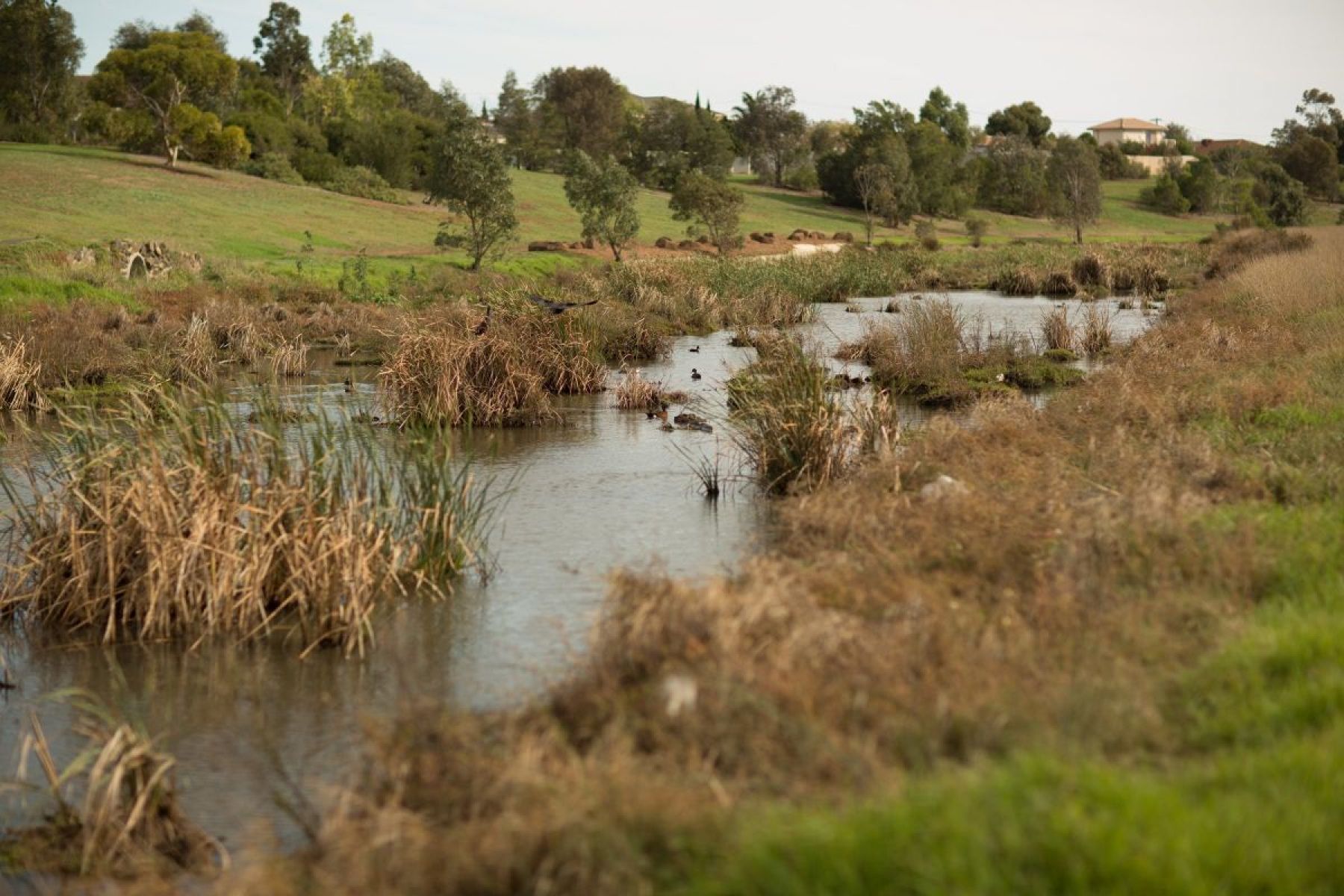On this page:
Stormwater is water runoff from urban areas. This water is different from runoff in undeveloped areas, because of all the hard surfaces in cities and towns, such as roofs and roads.
Unmanaged stormwater runoff can cause flooding and impact property and public safety. The increased pollutant and sediment loads, runoff volumes and flow velocities of stormwater can also cause harm to receiving waterways.
As our cities and towns grow, more stormwater is created from rain on hard surfaces, so it is important that developments are managed in accordance with statewide stormwater management requirements.
Victoria’s stormwater management requirements
Many development types are subject to Victoria’s best practice stormwater management requirements through the Victoria Planning Provisions (VPPs):
- residential subdivisions
- apartments
- residential multi-dwellings, for example townhouses
- commercial subdivisions and developments
- industrial subdivisions and developments
- public use developments.
Requirements have been in place for residential subdivisions since 2006 and apartment developments since 2017.
Planning reforms introduced in October 2018 further broadened the range of development types required to manage stormwater, following the recommendations of the Improving Stormwater Management Advisory Committee.
Amendment VC154 - Stormwater Management Advisory Note 75
How to meet stormwater planning requirements
Resources have been developed to support applicants and assessors in meeting their stormwater planning requirements. Visit Clearwater resource library.
BlueFactor – a new tool to assess stormwater management requirements
DEECA in partnership with Microburst Software has introduced BlueFactor, a new and improved tool for assessing stormwater management outcomes. This tool is replacing the existing STORM tool which will be officially retired soon. STORM was developed in 2006 and is no longer fit for purpose.
This updated tool is accepted by councils to meet stormwater planning requirements. Guidance on these for a specific development type can be found within the Online Navigator Tool. It generates a STORM score that can be submitted to council as part of the planning process.
The final report also provides further information on the predicted performance of the assets, which should be used to guide the ultimate design to optimise environmental outcomes for the development. These results should be used with the EPA Urban stormwater management guidance and the General Environmental Duty in mind. Additionally, this tool can also be used for calculating an initial estimate of stormwater offsets if they are available from the relevant council. See information on Stormwater Offsets below.
BlueFactor, like STORM, is designed for small scale residential developments up to one hectare. It is also possible to use the tool for simple, small scale commercial and public developments. It is recommended that modelling for larger and more complex developments continue to be undertaken with MUSIC.
BlueFactor will continue to undergo improvements to reflect new stormwater management requirements and a broader range of treatment measures.
We encourage practitioners to familiarise themselves with the tool, explore the FAQ and user tutorial resources available on the website, and direct any enquiries to the help desk at BlueFactor.helpdesk@deeca.vic.gov.au.
Online navigator tool resource portal
This tool provides users with step-by-step guidance, advice and resources to ensure their subdivision or buildings and works development meets Victoria’s stormwater planning requirements.
The tool was developed by DEECA and Clearwater, a stormwater capacity building program.

Compliance checklist for applicants and assessors
Example development scenarios
Stormwater offsets framework
Stormwater management requirements can usually be met on-site using rainwater tanks or rain gardens. But sometimes there isn’t enough space or there are other technical reasons why they won’t work.
In these cases, a better environmental outcome may come by treating stormwater offsite. For example, by constructing a larger treatment asset within the same catchment, like a wetland.
Instead of treating all their stormwater on-site, developers can pay a stormwater offset fee to council if the council has established an offset scheme. Then council can use these funds to build larger stormwater treatment assets.
This way, the stormwater impact from the new development can be treated offsite. This is also known as a stormwater offset.
DEECA has developed an offsets framework to help councils that want to develop their own stormwater offsets scheme, sometimes called an in-lieu contribution scheme. This helps councils set up and manage their own schemes and includes guidance on how to calculate offset fees.
Other useful resources
Rainwater tanks
Rainwater tanks are a great way of collecting water for use on your garden, in your laundry or for toilet flushing. But it’s important to keep the system in good condition for both safety and operational efficiency.
Find out more information on how to maintain and operate a rainwater tank.
Environmentally sustainable development of buildings and subdivisions
Learn how the planning system is changing to improve the sustainability of buildings and subdivisions across Victoria.
Green-blue infrastructure guidelines
DEECA has partnered with the City of Ballarat to develop Planning a Green-Blue City.
This is a how-to guide for planning urban greening and enhanced stormwater management. It allows local governments to develop the necessary components of a green-blue infrastructure action plan to inform and drive local government-led initiatives.
Planning a Green-Blue City guidelines
Trees for cooler and greener streetscapes
To help prioritise trees in our urban landscape, the Victorian Government has developed Trees for Cooler and Greener Streetscapes - Guidelines for Streetscape Planning and Design.
Page last updated: 07/08/25
